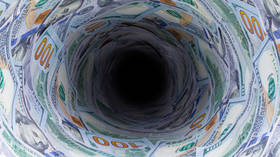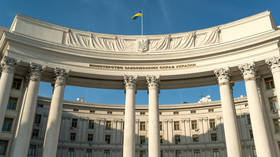The global ‘black hole’ debt will soon top $100 TRILLION & 'We're about to get sucked into it' – Max Keiser

As the Bank of England says it’s considering the idea of negative interest rates as a last resort amid the Covid-19 crisis, the US Federal Reserve’s balance sheet has topped $7 trillion for the first time ever.
That number represents “a black hole of debt,” according to Max Keiser of RT’s Keiser Report. “There’s no resale value for those securities,” he says, explaining that, “if they try to sell those assets on the market, they’d get zero for them. So, in fact that’s a black hole growing on the balance sheet of the Federal Reserve Bank.”
The global hole in the central banks’ balance sheet is now topping $20 trillion and is projected to top $100 trillion in the next few years, Max says.
According to the former Wall Street stockbroker, “They [the Federal Reserve – Ed.] simply create these virtual fiat dollars” and the biggest lie that central bankers tell is that they’re fighting deflation by injecting more debt money into the black hole. “They’re causing the deflation, defined as an expansion of the black hole of debt.”
There’s no stopping that black hole, says Max, and “we’re about to get sucked into it.”
For more stories on economy & finance visit RT's business section














